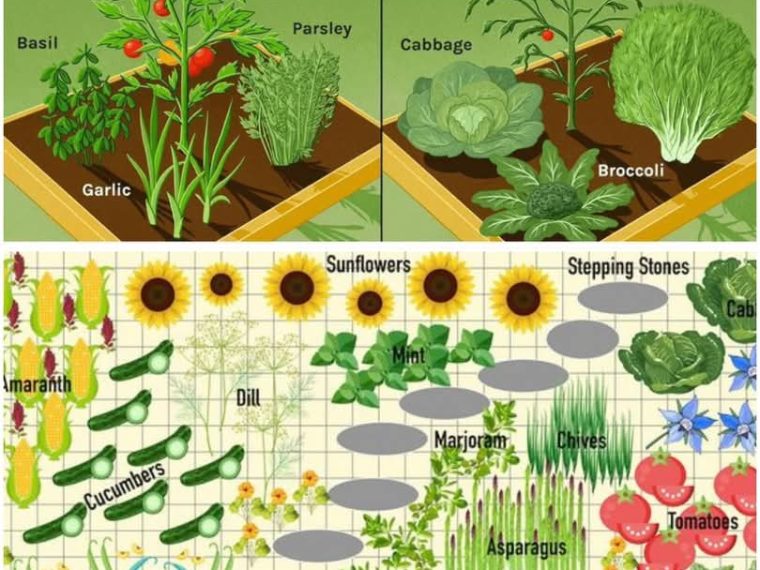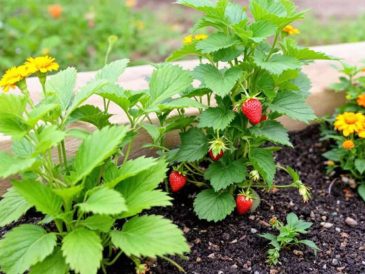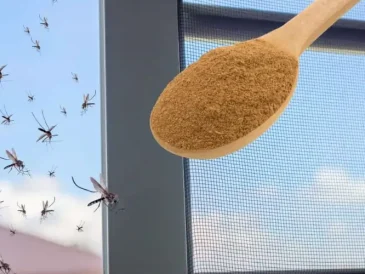Most people plant their gardens with little thought as to what plants grow well together. The secret to an amazing garden, though? Companion planting!
Companion planting not only takes nutrient uptake into consideration, but it also brings into account crop protection, pest management and positive hosting (aka. increasing the population of beneficial insects that will help manage your harmful pest population).
What is Companion Planting?
Companion planting is the practice of planting two or more plants together for mutual benefit. For example, certain plants might be grown together to help each other meet their nutrient requirements, growth habits, or pest-repelling abilities.
A classic example of companion planting comes from the Three Sisters trio – maize, climbing beans, and winter squash – which were often planted together by various indigenous nations across North America.
Benefits of Companion Planting
Aside from making nutrients available to other plants (and thus making them taste better), companion planting also achieves the following:
1. Minimizes Risk
If one crop fails or is affected by harsh weather, pests or disease, the overall yield of your plot may be increased by limiting the spread. To minimize risk, you’ll want to focus on creating the best natural growth patterns and diversity in your space. Avoid large monocultures (for example, a giant plot of tomatoes in one section), and instead focus on polycultures that mimick the way plants would grow in nature.
2. Crop Protection
Companion planting can offer shelter from harsh weather (like lots of wind or too much sun) to more delicate plants. Growing delicate plants next to more heartier ones that have the foliage and strength to withstand such conditions will guarantee the growth success of your smaller plants.
3. Trap Cropping
Companion planting also offers the best organic pest management. If one crop is more susceptible to pest infestation, try planting beneficial plants next to that crop that the pests despise. This will assist in protecting the pest-vulnerable plants.
4. Positive Hosting
By planting your fruit and veggies next to plants (like certain flowers) that produce a surplus of nectar and pollen, you can increase the population of beneficial insects while helping you manage your harmful pest population.
Companion Planting Chart
Use this companion planting chart as a guide so that you can design your garden in order to have better success!
Amaranth should be planted with corn to shade the soil and retain water. It also helps attract predatory ground beetles.
Asparagus can be planted with basil, cilantro, dill, marigolds, nasturtiums, oregano, parsley, peppers, sage, thyme and tomatoes. Asparagus actually repels nematodes that attack tomato plants, and tomatoes repel asparagus beetles.
Apples and Apricots surprisingly love to be planted next to garlic, but it makes sense. Garlic helps repel pests like the fruit tree bore, aphids and mites. The tree roots also absorb sulfur produced by the garlic, making the tree more resistant to fungus, mold and black spot. Marigolds are another winner for fruit trees, as they help attract pollinators (which then pollinate the flowers of the fruit trees). These flowers also help discourage nematodes in the soil, which beneficial for fruit trees.
Basil is a great herb to plant next to tomatoes to help improve their flavor. It also helps repel aphids, asparagus beetles, mites, flies, mosquitoes and tomato horn worm. For this reason, it should also be planted next to asparagus. Basil also works good when planted next to oregano and peppers.
Beans are all nitrogen fixers of the soil, so they should be planted next to plants of the Brassica family, carrots, celery, chard, corn, cucumber, eggplant, peas, potatoes, radish and strawberries. Avoid planting near chives, garlic, leeks and onion (they don’t like them!). Beets and beans should also be avoided next to one another as they can stunt each others growth.
Beets can be planted next to bush beans, Brassicas, corn, garlic, kohlrabi, leeks, lettuce, mint and potatoes. Avoid planting beets next to pole beans.
Squash doesn’t only love to be planted next to corn, but it also works great next to lettuce, melons, peas and radish. Avoid planting next to Brassicas or potatoes. Borage is said to improve the growth and flavor of squash. Marigolds and nasturtium help repel many different squash pests.
Strawberries respond well when coupled with beans, borage, garlic, lettuce, onions, peas, spinach and thyme. Avoid planting next to Brassicas, fennel and kohlrabi.
Sunflowers are said to increase corn yields when planted next to corn rows. Use sunflowers as a means to attract pollinators to other crops, particularly squash and pumpkins, and any other crop that requires pollinating insects.
Tomatoes are sensitive when it comes to companion planting, but they mostly benefit from asparagus, basil, beans, borage, carrots, celery, chives, collards, garlic, lettuce, marigold, mint, nasturtium, onion, parsley and peppers. Do not plant next to dill, Brassicas, corn or kohlrabi. Potatoes may spread blight to tomatoes, so do not plant nearby. Tomatoes aren’t the best of friends with cucumbers either, as they are both require lots of resources in the soil. While some people have success planting them together, others do not. Try to avoid planting them in the same space.




